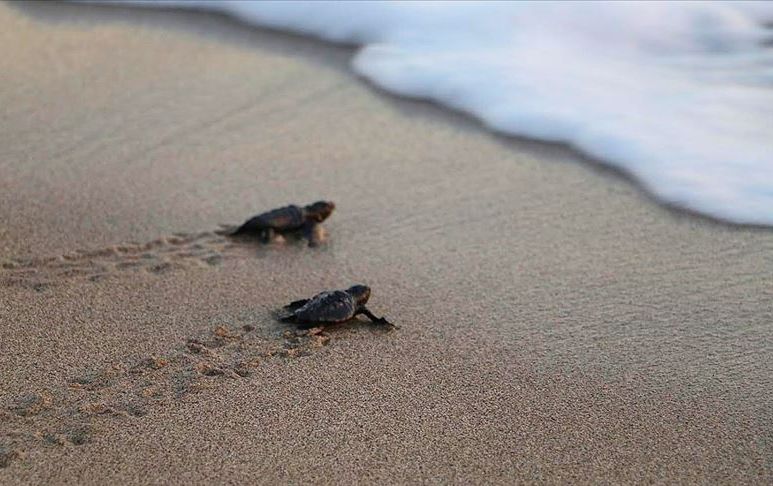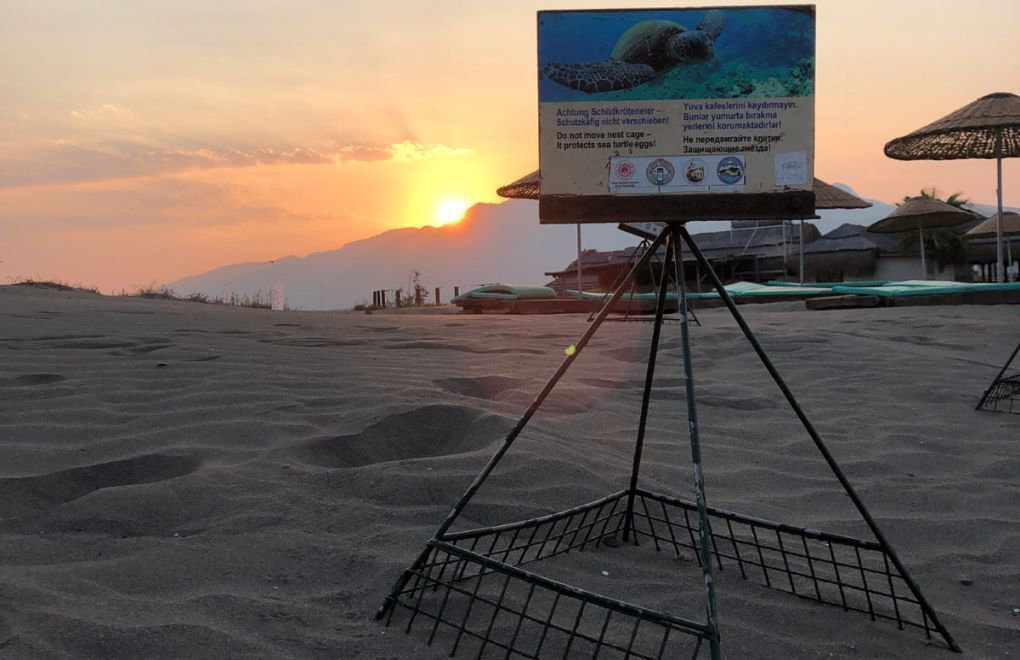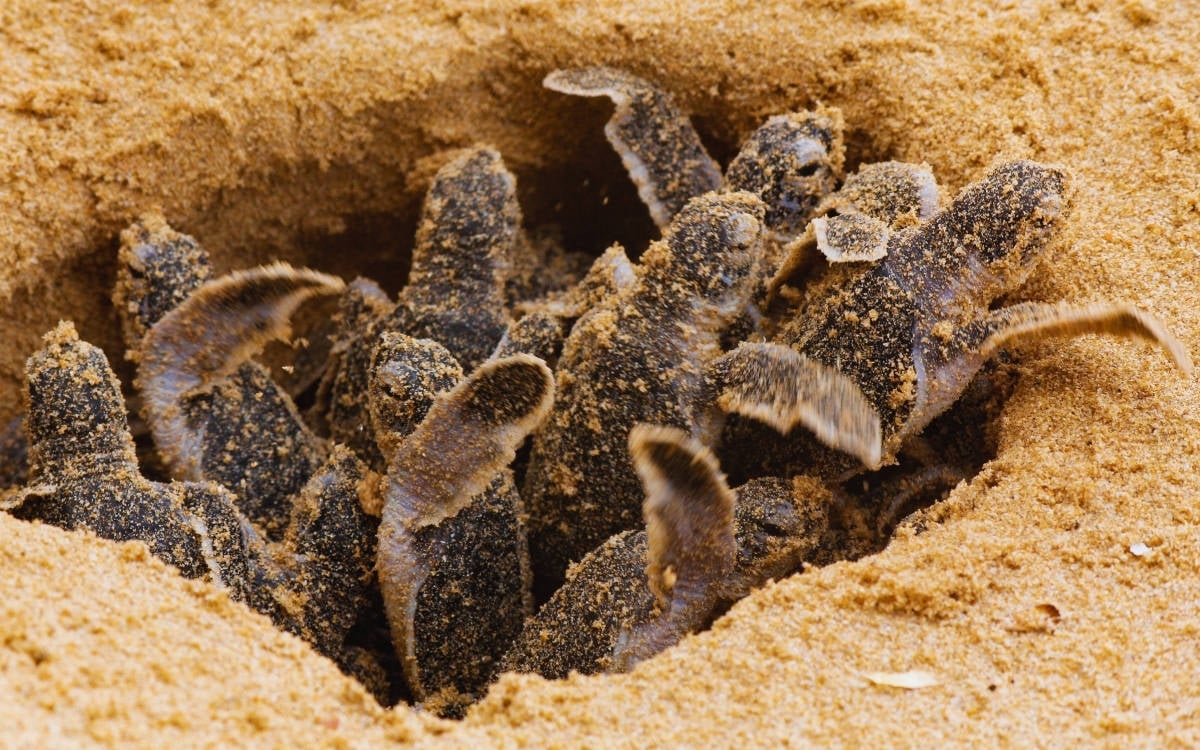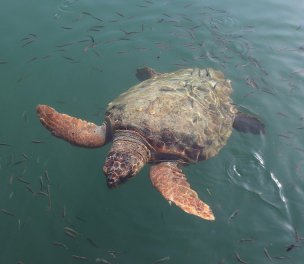A warning sign at İztuzu Beach to alert visitors to the presence of loggerhead turtle nests (Photos: AA)
Antalya, Turkey's Mediterranean coastal province, has witnessed a remarkable discovery of about 3,600 nests belonging to loggerhead turtles, also known as Caretta caretta, Anadolu Agency (AA) reported.
Out of these nests, approximately 2,000 were identified in the Belek district, while the remaining 1,600 were spotted in Kızılot. The region stands as one of Europe's largest nesting grounds for the Caretta caretta species.
Since May, these turtles have been burying their eggs beneath the sandy shores, and now the offspring have started to emerge from their shells.
The journey from the sand to the blue waters is an arduous one for the offspring of Caretta carettas, which are classified as endangered worldwide. Along the way, they face threats from predators like foxes, dogs, seagulls, and crabs. Additionally, the litter and plastic waste left behind by humans on the beaches pose further hazards to their survival.

Loggerhead turtles, the largest sea turtles found in the Mediterranean Sea, embark on their nesting journey from May to September every year.
Among the most essential nesting grounds for loggerhead turtles in Turkey are the İztuzu Beach in Muğla, Çıralı Beach in Antalya, and Akyatan Lagoon in Mersin.
Female loggerhead turtles dig nests and lay about 100 eggs in each nest, which hatch after about 60 days. The baby turtles emerge from the sand and head for the sea. Many of them are eaten by predators, but some survive to adulthood. (VK)








